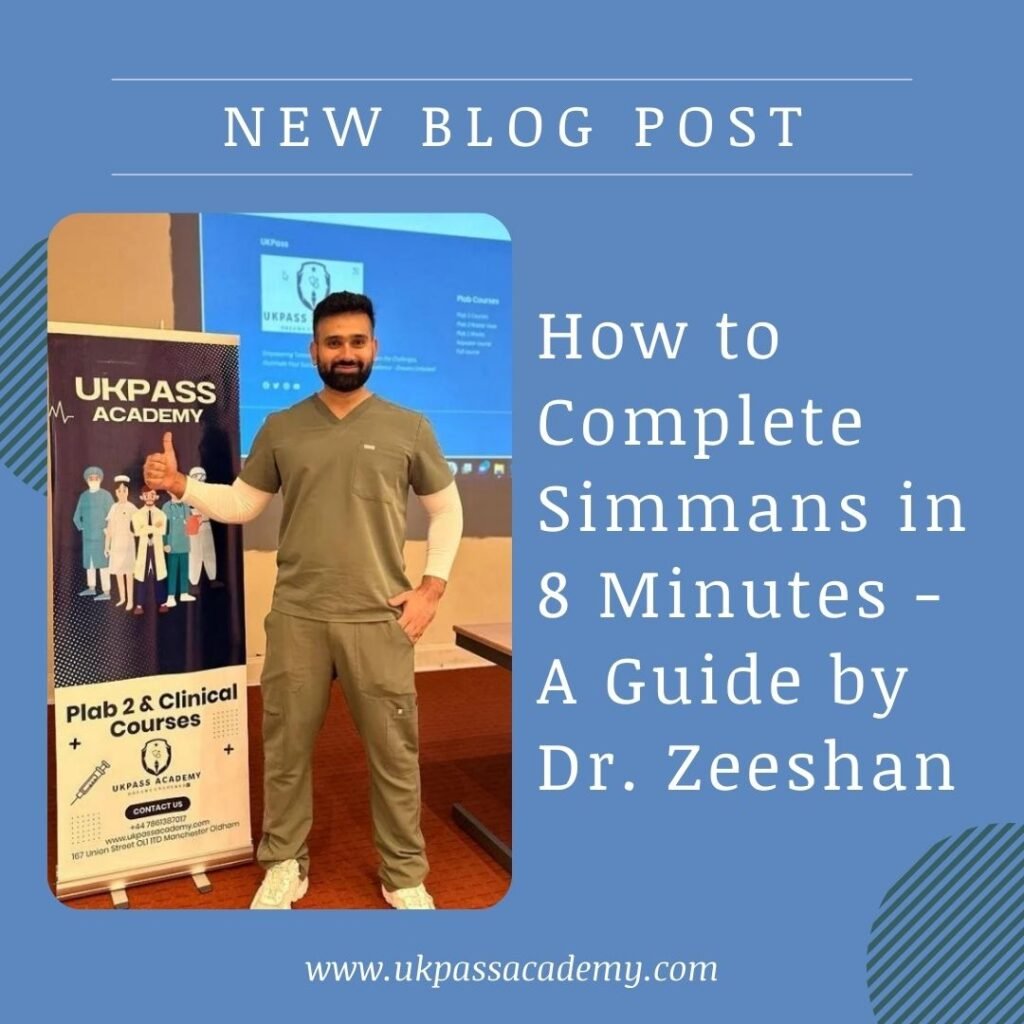As part of our comprehensive PLAB 2 Course, we place a strong emphasis on preparing candidates for the challenging Simman (Simulation Man) stations. Mastering the art of managing simulated scenarios within a strict time frame is crucial for success in this demanding examination. Today, I’ll share my expert insights on how to effectively complete Simman stations in 8 minutes, ensuring you showcase your clinical knowledge and critical thinking skills.
Understanding the Simman Station
The Simman station is designed to assess your ability to manage a simulated medical scenario involving a manikin patient. During this station, you’ll be expected to demonstrate your clinical skills, decision-making abilities, and communication proficiency within a limited timeframe of 8 minutes.
The Anaphylaxis Scenario
One of the commonly encountered scenarios in Simman stations is anaphylaxis, a severe and potentially life-threatening allergic reaction. Let’s dive into the specifics of how to tackle this scenario effectively.
Initial Approach
Upon entering the room, your first priority should be to address safety concerns. Loudly state, “Examiner, assume I have taken all universal precautions.” Then, approach the simulated patient, introduce yourself, and confirm their name and age.
Next, gather essential information by asking the patient about the onset of symptoms, how it started, and any significant events preceding the condition. In the case of anaphylaxis, inquire about blood transfusions, antibiotics, or catheter insertions, as these could be potential triggers.
Assessment and Management
Once you’ve obtained the necessary history, proceed with a focused assessment following the ABCDE approach:
– Airway: Assess for lip and tongue swelling, which are common signs of anaphylaxis.
– Breathing: Inspect the chest, auscultate for wheezing, and order relevant investigations (chest X-ray, ECG, and ABG).
– Circulation: Check perfusion, pulse, and blood pressure. Be prepared to manage hypotension by administering fluids and requesting emergency blood products.
During the assessment, be vigilant for signs of anaphylaxis, such as rashes on the chest or legs. If present, take immediate action:
– Stop any ongoing blood transfusions, remove catheters, and discontinue antibiotics.
– Administer intramuscular adrenaline (0.5 mL of 1:1000 solution in the thigh).
– Provide supplemental oxygen and consider nebulized salbutamol if wheezing is present.
– Manage blood pressure accordingly and administer intravenous chlorpheniramine.
Ongoing Management and Documentation
Throughout the scenario, continuously reassess the patient’s condition and repeat interventions as necessary. Key points to remember include:
– Repeating adrenaline if symptoms persist
– Checking blood sugar, temperature, and assessing limb movement
– Examining surgical sites or wounds for any complications
– Reinserting catheters and monitoring urine output
– Explaining the condition and management plan to the patient
Importantly, never forget to verbalize the need to complete an incident form, as anaphylaxis is a reportable event.
General Strategies for Simman Success
While the anaphylaxis scenario provides a specific example, there are some general strategies that can help you excel in Simman stations:
– Maintain a calm and professional demeanor throughout the scenario.
– Prioritize patient safety and verbalize appropriate precautions.
– Gather relevant information through focused questioning and physical examination.
– Apply a structured approach, such as ABCDE, to ensure a comprehensive assessment.
– Verbalize your thought process, actions, and management plans clearly.
– Demonstrate effective communication skills when interacting with the simulated patient.
– Time management is crucial; aim to complete the scenario within the allotted 8 minutes.
The Importance of Practice
Mastering Simman stations requires extensive practice and preparation. Our PLAB 2 Course at UKPass Academy offers comprehensive training, including:
– Realistic simulated scenarios covering a wide range of clinical presentations
– Personalized feedback and guidance from experienced instructors
– Structured practice sessions to improve time management and decision-making skills
– Mock exams to build confidence and familiarity with the examination format
By dedicating time and effort to practicing Simman scenarios, you’ll develop the necessary skills to approach these stations with confidence and composure, increasing your chances of success in the PLAB 2 exam.
Remember, the Simman station is not just about demonstrating your medical knowledge; it’s also about showcasing your ability to think critically, communicate effectively, and manage challenging situations in a timely and professional manner. By following the strategies outlined in this guide and committing to regular practice through our PLAB 2 Course, you’ll be well-prepared to tackle any Simman scenario that comes your way.

